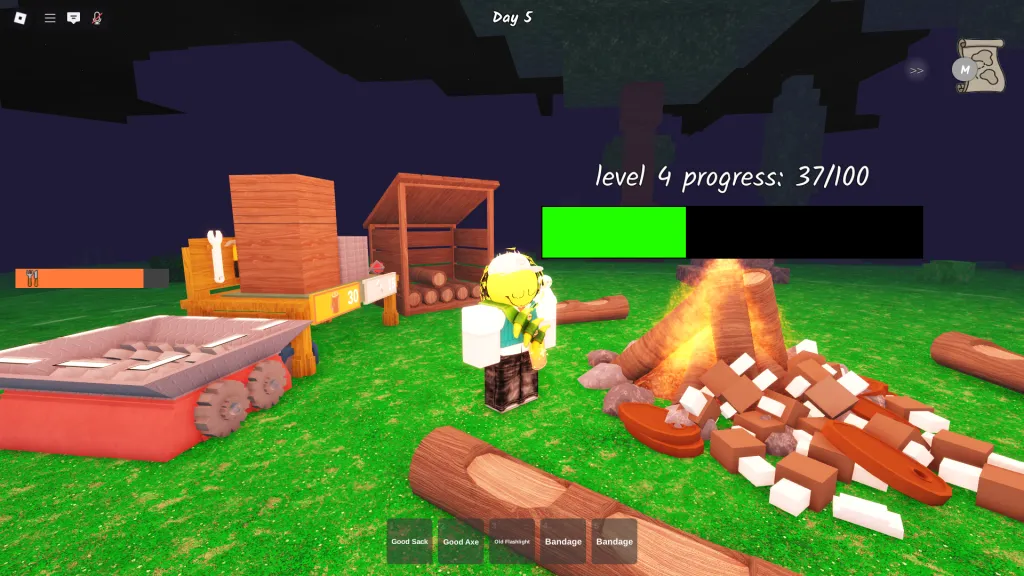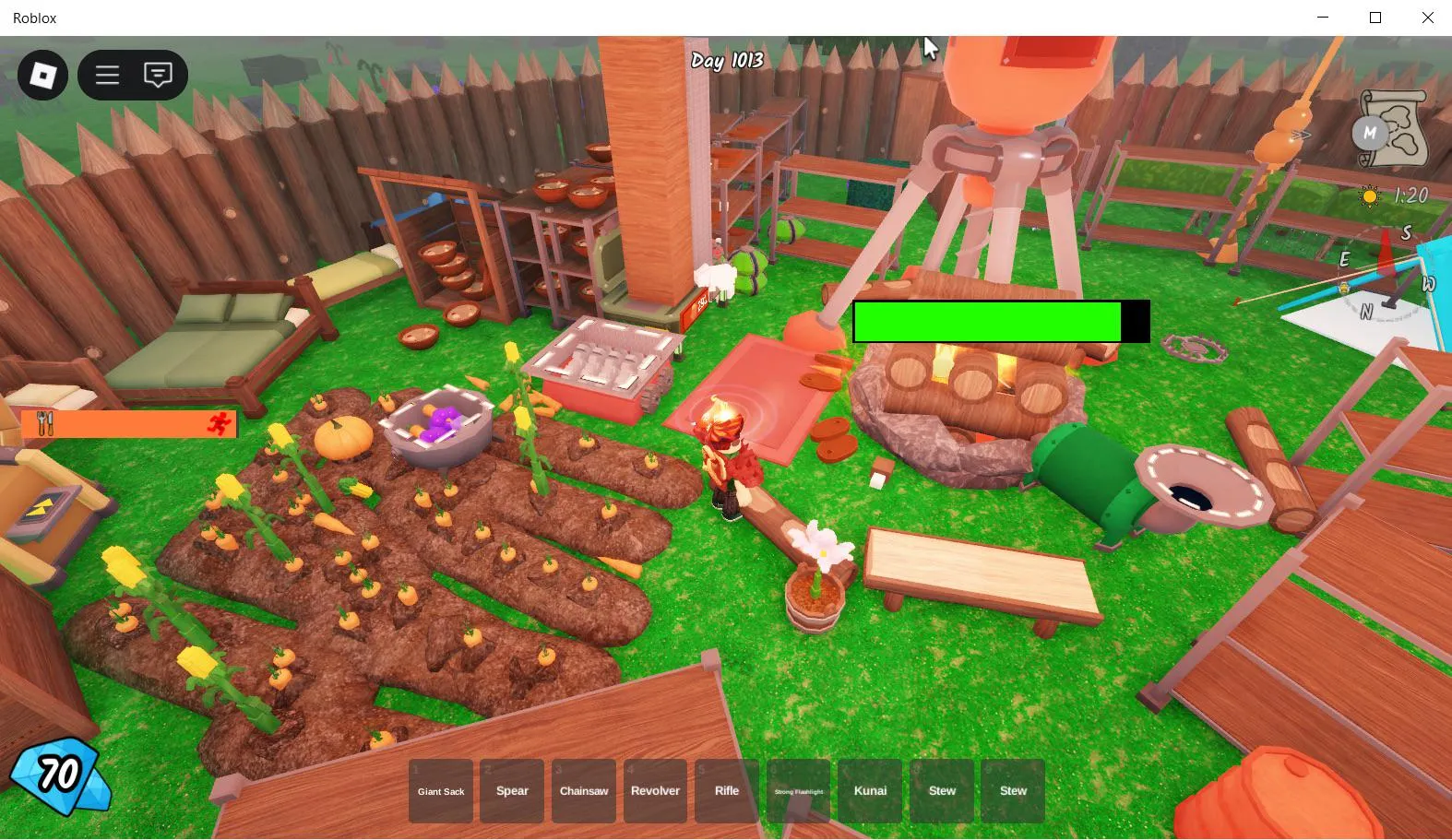Introduction
99 Nights in the Forest is a survival adventure game set in a vast, mysterious woodland filled with dangerous creatures, environmental hazards, and hidden resources. Players must navigate forests, rivers, and caves while scavenging for supplies, crafting tools, and fending off predators. Success depends on preparation, knowledge of the environment, and smart decision-making.
This guide provides detailed strategies for both new and experienced players, covering exploration, combat, resource management, crafting, base-building, and survival techniques. By following these tips, players can survive longer, defeat stronger enemies, and unlock rare resources to progress deeper into the game.
1. Understanding the Core Gameplay Mechanics
99 Nights in the Forest combines survival, crafting, and exploration mechanics. Each night brings new challenges as enemies become more aggressive and environmental hazards more dangerous.
Players must manage health, hunger, stamina, and energy levels while exploring. Failing to maintain these basic stats can lead to premature death. Understanding the core mechanics allows players to prioritize tasks effectively and stay ahead of threats.
Key survival priorities include collecting food and water, crafting essential tools, maintaining a safe shelter, and monitoring your surroundings for danger.

2. Exploration Strategies for Maximum Efficiency
Exploration is the heart of the game. The forest is full of resources, but wandering blindly is risky.
Plan your routes to visit areas with high resource density. Use landmarks and environmental cues to navigate efficiently. Avoid traveling at night unless you are fully prepared, as hostile creatures are more active after dark.
Always carry a map, a compass, or any navigation tool available. Keep an eye on stamina and food levels, and know the nearest safe zones for rest.
3. Combat Techniques Against Forest Enemies
Combat in 99 Nights in the Forest requires strategy and awareness. Enemies range from small aggressive animals to large forest predators.
Use ranged weapons for dangerous targets whenever possible. Melee weapons are effective for weaker enemies but carry higher risk. Learn attack patterns, retreat when overwhelmed, and never underestimate camouflage or stealth.
Timing your attacks and blocking or dodging enemy strikes is crucial. Using the environment, such as narrow pathways or high ground, can give a significant advantage.
4. Resource Gathering and Inventory Management
Efficient resource gathering ensures long-term survival. Prioritize essential resources such as food, water, wood, herbs, and crafting materials.
Inventory management is key. Organize items by type and importance, and avoid carrying unnecessary items that take up valuable space. Drop low-value resources when inventory is full to make room for rare materials.
Focus on areas with high-yield resources first, and keep track of replenishing zones for future expeditions.
5. Crafting and Tool Optimization
Crafting is essential to survive. Tools, weapons, and shelter improvements give players a significant advantage.
Always craft basic survival tools first, such as axes, knives, and water containers. Upgrade weapons and armor when possible to increase combat efficiency. Combining multiple resources can yield advanced gear that improves survivability in mid- to late-game.
Remember to repair tools frequently; damaged equipment performs poorly and can fail in critical moments.

6. Base Building and Shelter Strategies
A safe base is crucial in 99 Nights in the Forest. Proper placement of your shelter can mean the difference between survival and early death.
Choose locations near water and resource-rich areas but away from predator paths. Reinforce your shelter with traps or defensive barriers to protect against nighttime attacks.
Organize your base to optimize storage, crafting stations, and resting areas. A well-designed base reduces downtime and increases survival chances.
7. Managing Hunger, Thirst, and Energy
Survival depends on monitoring hunger, thirst, and energy levels. Ignoring these stats reduces stamina, slows movement, and makes combat more difficult.
Prioritize gathering and storing food and water. Cook raw resources to increase nutritional value and avoid sickness. Take rest breaks to recover stamina and heal minor injuries.
Late-game survival often depends on stockpiling food and water to prepare for extended exploration or combat missions.
8. Nighttime Survival Tactics
Nights are the most dangerous times in the forest. Enemies are more aggressive, and visibility is limited.
Use torches or light sources to detect threats. Avoid open areas at night and travel cautiously. Use stealth to bypass predators and rely on ranged attacks to deal with unavoidable encounters.
Plan nighttime routes to minimize risk and ensure access to safe zones in case of emergencies.
9. Advanced Combat and Boss Strategies
Some areas feature boss creatures that are far stronger than normal enemies. Defeating them requires preparation, skill, and strategy.
Analyze attack patterns before committing to a fight. Use traps, ranged attacks, and environmental advantages to weaken bosses. Always keep healing items and stamina-boosting consumables handy.
In team play, coordinate roles to maximize damage while minimizing casualties. Assign roles like damage dealer, healer, and distraction to handle boss fights effectively.

10. Long-Term Progression and Endgame Tips
Late-game survival focuses on resource efficiency, high-level crafting, and exploration of dangerous zones.
Upgrade tools, weapons, and armor to tackle tougher enemies. Stockpile rare resources for crafting advanced equipment. Optimize exploration routes to maximize loot and minimize risk.
Adapt to changing conditions, learn enemy patterns, and refine survival strategies continuously. Success in 99 Nights in the Forest comes from careful planning, adaptability, and efficient resource management.
Conclusion
99 Nights in the Forest is a challenging survival game that rewards preparation, strategy, and resourcefulness. By mastering exploration, combat, crafting, base-building, and nighttime survival, players can thrive in the forest and tackle its most dangerous threats. Patience, awareness, and smart decision-making are key to surviving all 99 nights and uncovering the forest’s secrets.

















